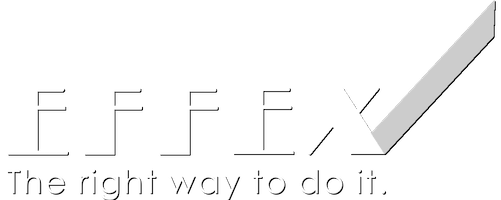By Hardik Harsora, Co- Founder of Effex Business Solutions
This article was originally published by E27,
Mumbai, Feb 2017 – Getting the right people on-board and in the right roles can be a big startup challenge in itself
Ask most startups what their biggest challenge is, and they’re quick to say ‘talent’. In other words, ‘manpower’.
– Hardik Harsora, Co-Founder of Effex Business Solution
To a large extent, they are right. Finding the skill sets, cultural fit, and startup mentality in a single package is a daunting task. Add to that the affordability when it comes to hiring, and this truly becomes one of startups’ biggest challenges. When funds are tight and founders don’t want to barter with equity, it’s a mammoth task to find high potential at low cost. However, hiring the right people is also the most essential element for a startup to sustain.
But merely hiring isn’t enough. A startup doesn’t just need to hire someone who’s brilliant. It has to hire people who are brilliant for a specific position. As bestselling author Jim Collins wrote in Good to Great, “Get the right people on the bus, and then ensure that they are in the right seats.”
Get the right people onboard, and in the right seats. But don’t dust your hands just yet hands. Most startups falter here because they think their job is done. But it’s not. It just got tougher.
If you’ve hired a remarkable employee, keeping her engaged is crucial. Competition is always looking to poach high quality talent. And losing a good employee is a body blow to any startup. To insulate itself against this, a startup should engage with its employees.
Engagement here doesn’t mean merely clicking photos of office fun and posting them on Instagram. Such activities are fun in the beginning. But once the novelty wears off, employees crave for more. They crave for growth and autonomy, for a platform to discover their innate abilities, and something meaningful.
That is true engagement: It is meaningful, and it has many benefits
Autonomy is an essential element of meaningful engagement. It stokes the entrepreneurial spirit of employees within a startup: entrepreneurship. In turn, this reduces attrition. Studies prove that startups with tenured employees who have enjoyed autonomy sail through initial challenges faster.
Here are three ways in which startups can meaningfully engage with employees and, in the process, grow their own business:
1. Cross-pollinate
Startup recruits are rarely comfortable with the status quo. Their appetite for risk, excitement, and diversity, is high. Keeping them in the same field for extended periods proves counterproductive, almost always.
Introduction to different departments is an effective method to keep them engaged. Startups can create an in-house forum where employees from all departments share their victories and challenges. It will help people interested in a specific department know it better. For instance, a back-office employee who might be interested in business development gets to know more about it from the business development team itself.
This is also is an effective platform to bounce ideas off each other. People can get fresh perspectives and ideas. It also makes your employees versatile and work cooperatively instead of silos.
2. Acknowledge and remunerate employee passions
Acknowledging team members’ hobbies and passions, verbally and monetarily, is another potent way to engage meaningfully.
For instance, your graphics designer could be part of a music band. Instead of hiring a band to perform at your informal gatherings, commission his band to perform for a fee.
This increases employee loyalty towards the company. Those earning money through these alternate avenues become motivated. But so do other employees, who feel secure that their alternate talents will be rewarded.
3. Align with their goals
According to strategy gurus, a good strategy aligns employee goals with organisational goals. What if startups reverse the order?
Here is an example. The founder CEO of a startup we were consulting had a challenge: He could not get people to rally around large goal. So we conducted an exercise.
We asked the founder CEO to meet each employee and know their long term goals. Someone wanted to earn money for higher education. Yet another wanted to buy a house. A third wanted a stable income to get married. And so on.
The CEO combined the financial value of these goals and came up with a sum. Then, he called everyone together into his cabin and showed them the final figure. “If we earn this revenue each year,” he said, “all of you can achieve your long term goals in a few years.” The team was pumped and started working enthusiastically towards achieving the target. It’s been two years and they are still going strong. And all of them are much closer to their end goals than they had imagined they would be.
There is no return on investment as high as meaningfully engaging with employees in unconventional ways. Most brilliant minds will forego ‘salary’ for purpose. If you want brilliant people on-board, give them what they need.







